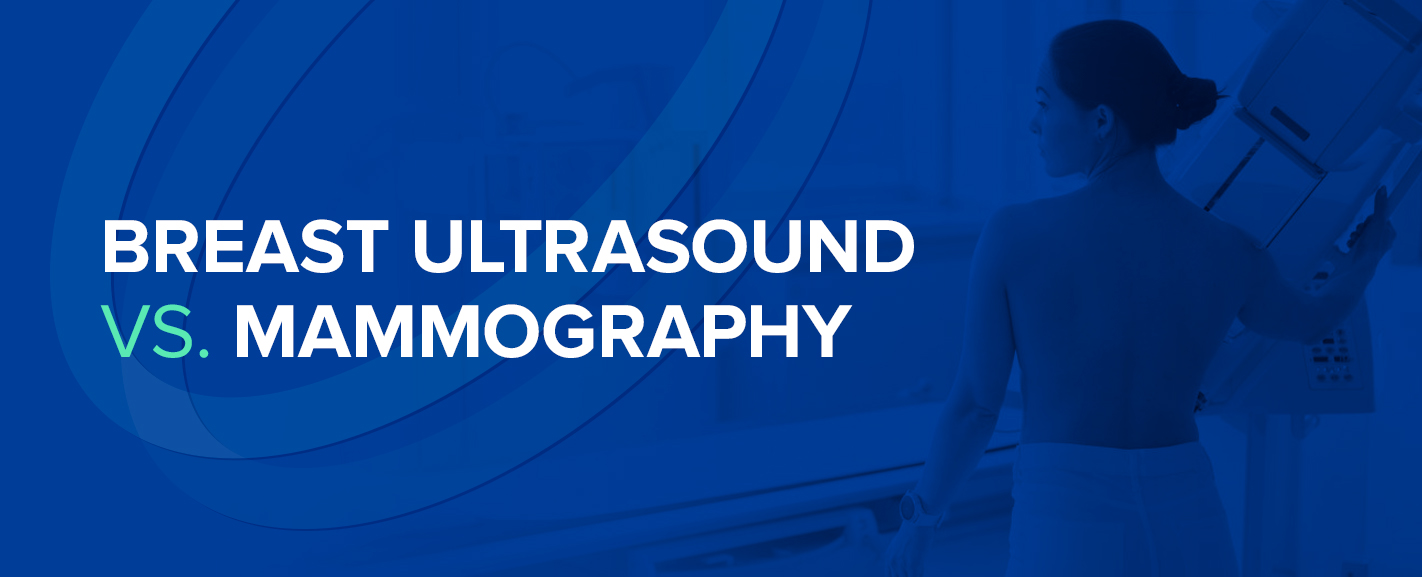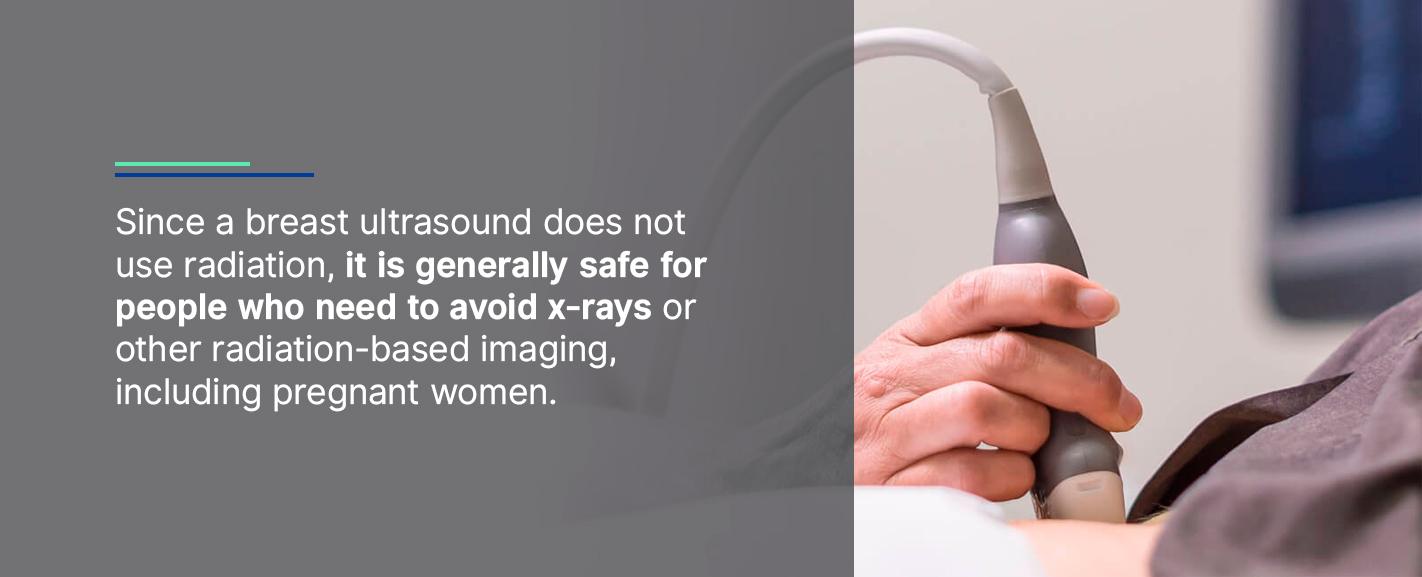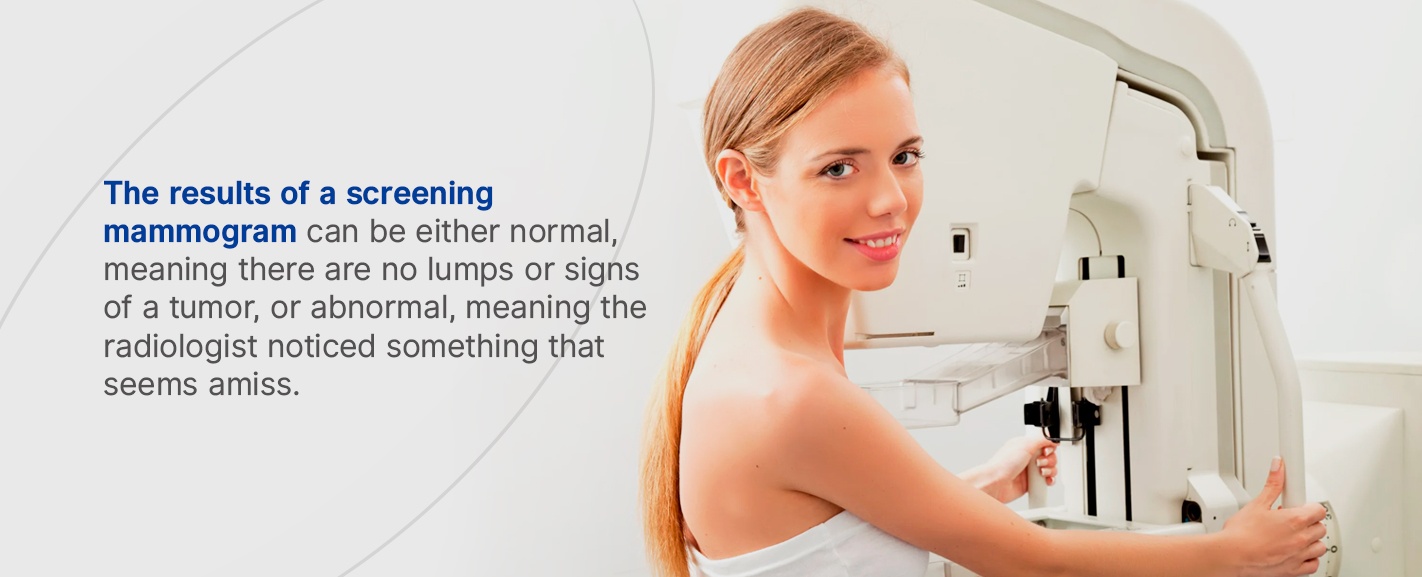Breast Ultrasound vs. Mammography

Early detection can help save lives, particularly when it comes to breast cancer. During a breast cancer screening, you or a doctor checks your breasts for signs of cancer, such as lumps or changes in the tissue. Screening can take several forms, from performing a breast self-exam at home to having a nurse or physician perform a clinical exam during a visit.
Medical providers also use mammograms to screen women for breast cancer. In some cases, imaging, such as a breast ultrasound or diagnostic mammogram, can help a physician further evaluate changes in the breast tissue. Learn more about breast cancer diagnostic and screening imaging, so you can choose the best option for you.
Jump to Sections:
- What Is a Breast Ultrasou
“logo”: {
“@type”: “ImageObject”,nd? - What Is a Mammogram?
- Breast Ultrasound vs. Diagnostic Mammogram
- Diagnostic Mammogram vs. Ultrasound
- Schedule a Mammogram or Ultrasound
What Is a Breast Ultrasound?
Ultrasound imaging uses sound waves to create a picture of the inside of the body. During a breast ultrasound, a technologist captures images of the breast tissue. They hold a wand, known as a transducer, over the breasts throughout the imaging tests. The transducer sends sound waves that bounce off the breast tissue, traveling back to the transducer and creating an image.
A breast ultrasound isn’t typically a screening tool for breast cancer. Instead, a physician might order an ultrasound, also called a sonogram, of the breasts if a screening mammogram produces unusual results. A physician might also use a breast ultrasound as a visual guide while performing a biopsy of the breasts.
Since a breast ultrasound does not use radiation, it is generally safe for people who need to avoid x-rays or other radiation-based imaging, including pregnant women.
What Is a Mammogram?
A mammogram is a picture of the breasts taken using x-ray imaging. It is one of the most commonly used early detection and screening tools for breast cancer. In some cases, a mammogram allows a physician to detect breast cancer three years before a tumor would be palpable.
The benefits of a mammogram vary based on a woman’s age and breast cancer risk. Women with an average risk of breast cancer might benefit from annual mammograms beginning at age 40. Ultimately, it is up to a woman and her doctor to weigh the benefits and risks of the screening and determine how often to get exams. Women who are at a higher risk for breast cancer might need more frequent mammograms than women who are an average or low risk.
During a mammogram, the breast rests on a plate positioned at chest level. A second plate lowers on top of the breast, pushing it flat and holding it still while the x-ray machine captures an image. The technologist performing the x-ray will capture images from the front and the side, taking four pictures in all, two of each breast.
The results of a screening mammogram can be either normal, meaning there are no lumps or signs of a tumor, or abnormal, meaning the radiologist noticed something that seems amiss. An abnormal screening mammogram doesn’t necessarily mean a woman has breast cancer. After an abnormal result, the next step is often to follow up with a diagnostic mammogram, so the technologist can capture more images.
Breast Ultrasound vs. Diagnostic Mammogram
Is a breast ultrasound better than a mammogram? Though a doctor might order both as a follow-up after an abnormal screening mammogram, there are several notable differences in the procedures. Some distinctions between the two are as follows.
- The imaging modality: Modality is the type of imaging used during a diagnostic test. Ultrasound uses sound waves to create images, while x-rays use radiation from electromagnetic waves to capture an image.
- The quality of images produced: Ultrasound and x-rays produce different types of pictures. Generally speaking, ultrasound images can’t capture microcalcifications. Those tiny calcium deposits can often be some of the earliest signs of breast cancer. However, a mammogram can detect them.
- The reasons for the imaging: A physician might order either an ultrasound or a diagnostic mammogram to follow up on an abnormal screening mammogram. A breast ultrasound has uses beyond being a follow-up tool. In some cases, a doctor will perform a breast biopsy, collecting a sample of tissue from the breast and testing it for cancer. They might use ultrasound imaging to guide the needle to the correct area of the breast.
Breast ultrasound is not currently a recommended screening tool for breast cancer, because it can miss many early signs of a tumor. Some patients might be better candidates for an ultrasound compared to a mammogram. Pregnant women should usually avoid having x-rays performed unless the imaging is essential. A breast ultrasound might be a suitable alternative to a mammogram during pregnancy. A breast ultrasound might also be a better option for younger women, particularly those in their 20s.
Diagnostic Mammogram vs. Ultrasound: How to Know Which Is Right for You
The medical care and treatment that is right for one person might not be ideal for another. Your medical provider can help you decide whether a diagnostic mammogram or an ultrasound of the breasts is the best choice for you. Here are some factors that might influence the decision you make with your health care provider.
- Your age: If you are under age 30, your physician might order an ultrasound of the breasts, rather than a mammogram. Health care providers usually don’t recommend mammograms for younger women, unless there is a notable family history of breast cancer or if a woman has other considerations that put her at a higher risk of the disease.
- Your weight: Your weight and the size of your breasts can affect the quality of imaging collected. It can be difficult for mammograms to detect cancers in women with dense breast tissue, for example. For that reason, your doctor might request an ultrasound in addition to a mammogram. Women who have large breasts or who are obese might not get accurate images from a breast ultrasound.
- The reason for the imaging: A breast ultrasound might be the best option if your physician is performing a biopsy or if they would like to determine if you have a cyst that needs draining.
- Your risk factors: If you cannot have x-rays performed, an ultrasound might be your best option.
Schedule a Mammogram or Ultrasound at Health Images
Whether an ultrasound or mammogram is the right option for you depends on your needs and your doctor’s recommendations. Health Images offers both mammography and ultrasound imaging services at our locations in Colorado. We’re here to help you get the compassionate and caring imaging services you need. To schedule your imaging test, find a location nearest you today.
Call to Schedule An Appointment
Sources:
- https://www.healthimages.com/locations/
- https://www.envrad.com/services/ultrasound-sonogram/
- https://www.hopkinsmedicine.org/health/treatment-tests-and-therapies/breast-ultrasound
- https://www.cdc.gov/cancer/breast/basic_info/screening.htm
- https://www.conwaymedicalcenter.com/news/ultrasound-vs-mammogram-faqs
- https://ww5.komen.org/BreastCancer/Ultrasound.html
- https://www.cdc.gov/cancer/breast/basic_info/mammograms.htm
- https://www.uspreventiveservicestaskforce.org/uspstf/recommendation/breast-cancer-screening
- https://medlineplus.gov/xrays.html
- https://www.envrad.com/services/mammography/
- http://www.memorialhermann.org/imaging-and-diagnostics/diagnostic-mammogram
- https://www.cancer.gov/types/breast/mammograms-fact-sheet#how-are-screening-and-diagnostic-mammograms-different
- https://www.hackensackmeridianhealth.org/HealthU/2018/09/18/breast-ultrasound-versus-mammography/
- https://americanpregnancy.org/is-it-safe/x-rays-during-pregnancy-1189
- https://www.mskcc.org/cancer-care/patient-education/ultrasound-guided-breast-biopsy
- https://ww5.komen.org/BreastCancer/BreastCancerScreeningforWomenatAverageRisk.html





